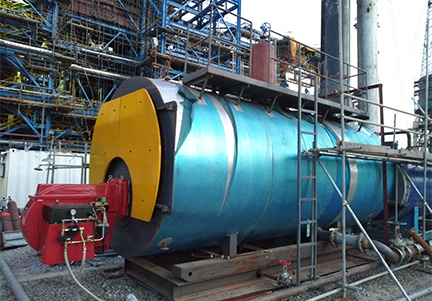custom waste heat recovery boiler in cement plant
Custom Waste Heat Recovery Boiler in Cement Plant
In the modern era, the cement industry is under increasing pressure to reduce energy consumption and minimize environmental impact. One of the most innovative strategies adopted by many cement plants is the implementation of waste heat recovery systems. These systems utilize waste heat generated during the cement production process, converting it into useful energy. Among the various technologies used for this recovery, custom waste heat recovery boilers have emerged as a powerful solution.
Waste heat in a cement plant primarily comes from two sources the preheater exhaust gases and the clinker cooler discharge. The high-temperature flue gases from the preheating process are rich in thermal energy, yet often dissipate into the atmosphere without further use. Similarly, the heat generated from the cooling of clinker can also represent a significant loss of energy if not captured. By integrating custom waste heat recovery boilers designed specifically for the needs of a particular cement plant, operators can harness these energy losses to produce steam or hot water for various applications.
The design of a custom waste heat recovery boiler is paramount to its effectiveness. A one-size-fits-all approach does not yield optimal results, as each cement plant has unique operational parameters, such as temperature, gas flow rates, and specific energy requirements. Therefore, these boilers require a tailored design that considers the specific conditions of the plant. Engineers conduct detailed assessments, taking into account factors like exhaust gas temperature and pressure, as well as the moisture content of the flue gases, to create a bespoke solution that maximizes heat recovery efficiency.
The benefits of custom waste heat recovery boilers in cement plants are substantial. One of the most significant advantages is improved energy efficiency. By capturing waste heat and converting it into usable energy, cement plants can significantly reduce their reliance on fossil fuels, thus lowering operational costs. Moreover, the steam produced can be employed to power turbines, generate electricity, or provide heating for various processes in the plant, further enhancing efficiency.
custom waste heat recovery boiler in cement plant

Additionally, these systems contribute to environmental sustainability. By recovering and utilizing waste heat, cement plants can lower their carbon footprints, aligning with global initiatives aimed at reducing greenhouse gas emissions. The use of waste heat also minimizes the overall thermal demand from traditional energy sources, leading to reduced fuel consumption and diminished environmental impact.
The integration of custom waste heat recovery boilers does require upfront investment, including installation costs and necessary modifications to existing systems. However, the long-term savings and efficiencies gained often justify the initial expenditure. Many cement companies have successfully recouped their investments within a few years, thanks to reduced energy bills and enhanced production capabilities. Moreover, the push for green building practices and sustainable manufacturing processes has made energy efficiency a critical aspect of competitiveness in the industry.
Furthermore, as the technology evolves, advancements in control systems and materials have enhanced the performance and longevity of waste heat recovery boilers. Innovative features such as automated monitoring and diagnostics, heat exchangers, and advanced insulation techniques have further optimized energy capture, making these systems increasingly attractive to cement manufacturers looking to improve their operations.
In conclusion, the implementation of custom waste heat recovery boilers in cement plants represents a strategic move towards enhanced energy efficiency and sustainability. By effectively capturing and utilizing waste heat, cement manufacturers can significantly reduce their operational costs while minimizing environmental impact. As the industry continues to evolve, the importance of such technologies will only grow, making waste heat recovery an integral part of the cement production process. For cement companies worldwide, investing in custom waste heat recovery solutions not only addresses energy concerns but also paves the way for a more sustainable future in cement manufacturing.
-
Industrial Steam Boiler Corporation - Reliable Industrial Boiler Manufacturer & SupplierNewsJul.08,2025
-
High-Efficiency Steam Boiler Heat Exchanger Supplier & Factory Durable Products for IndustryNewsJul.08,2025
-
Premium Electric Steam Boiler Manufacturer Reliable Company & Factory SolutionsNewsJul.08,2025
-
Commercial Hot Water Boiler - Reliable Supplier & Factory Direct Price for Efficient Heating SolutionsNewsJul.07,2025
-
Top Hot Oil Boiler Manufacturer - Reliable Thermal Oil & Coal Fired Boiler Manufacturer ManufacturerNewsJul.07,2025
-
High-Efficiency Hotel Hot Water Boiler – Leading Exporters & Quotes for HotelsNewsJul.07,2025

